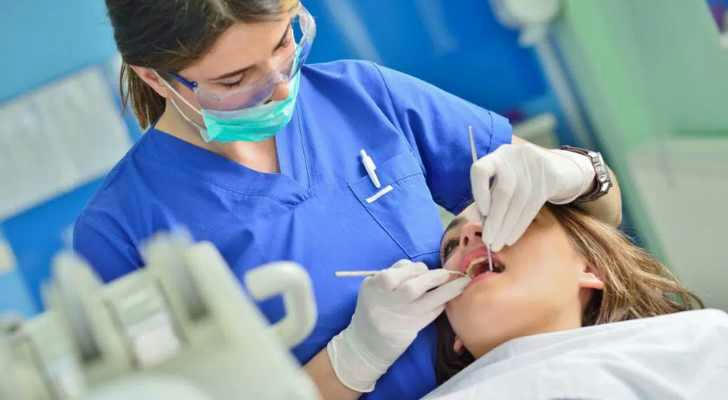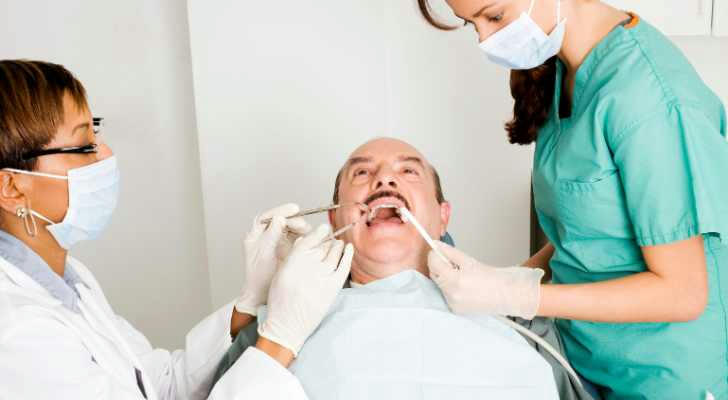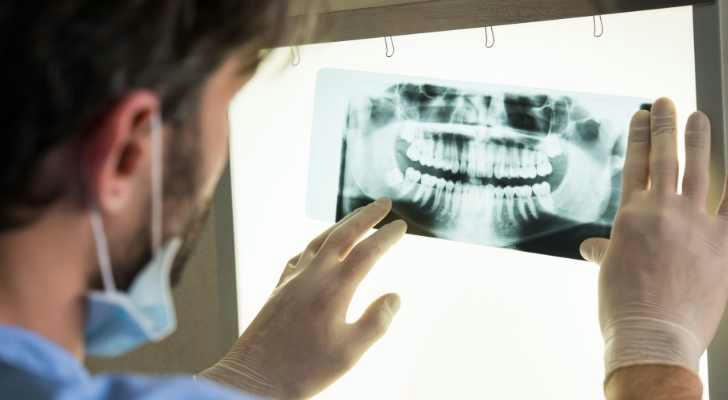4 Essential Steps to Becoming a Dental Hygienist (Plus FAQs)
Dental hygienists collaborate closely with dentists to ensure patients' oral health is well-maintained. If you’re considering a career in this field, understanding the role’s responsibilities and requirements can help you decide if it’s the right fit. This article covers what dental hygienists do, including their key duties, educational requirements, and answers to other commonly asked questions.
What does a dental hygienist do?

A dental hygienist plays a crucial role in maintaining and improving oral health under the supervision of a dentist. Their primary focus is on preventive care, which includes a variety of responsibilities such as:
• Teeth Cleaning: Removing plaque, tartar, and everyday stains, and performing thorough flossing.
• Gum Examination: Inspecting and probing gums to detect signs of periodontal disease.
• Medical Histories: Collecting patients' medical histories to aid in personalized care.
• Oral Health Education: Educating patients on effective oral hygiene practices and ways to enhance their oral health.
• Diagnostic Support: Recording symptoms of oral diseases for the dentist to review and diagnose.
• Anesthesia Administration: Administering local anesthetics to ensure patient comfort during procedures.
• Use of Tools: Operating various hand, power, and ultrasonic tools for cleanings and treatments.

• X-Rays: Performing X-ray imaging to help diagnose dental issues.
• Equipment Maintenance: Cleaning, sterilizing, and organizing dental instruments to ensure a safe environment.
• Preventive Agents: Applying fluorides and other agents to prevent dental decay.
• Team Collaboration: Working closely with dentists and dental assistants to deliver comprehensive care.
• Program Development: Creating and maintaining dental hygiene programs tailored to individual patient needs.
What is the average salary for dental hygienists?
The average salary for a dental hygienist in the U.S. is around $86,183 per year or $41.73 per hour. Keep in mind, this can vary depending on factors like experience, location, and employment type. For the most up-to-date salary info, check out Indeed’s latest data.
Where do dental hygienists typically work?
Dental hygienists usually find themselves working alongside general dentists or dental specialists—basically, most of them are in dental offices. In fact, the U.S. Bureau of Labor Statistics says that 94% of them work in those settings.

But it’s not all about office life! You might also see dental hygienists in public health agencies, hospitals, or community health clinics. They can even work in public schools, dental schools, and teaching programs. And for those who like a bit of variety, some switch gears to work in sales or research for dental equipment and products. So, there’s quite a range of exciting places where dental hygienists can make a difference!
To become a dental hygienist, you can follow these solutions:
To become a dental hygienist, you must fulfill specific education and certification requirements. Here are four key steps to start your career:
• Complete a training or degree program
To become a dental hygienist, you must first complete an accredited educational program. Over 300 community colleges, technical schools, dental schools, and universities offer these programs, all accredited by the Commission on Dental Accreditation (CODA), which is recognized by the U.S. Department of Education. Many of these programs have prerequisite courses that must be completed before admission.
The most common entry-level qualification is an associate's degree, which can be obtained from accredited community colleges, vocational schools, or dental schools and generally takes at least two years to complete. For more advanced positions, such as those in public health or school clinics, a bachelor's degree may be required, which typically takes four years.
You might also want to think about the type of patients you'd love to work with. Whether you're drawn to the smiles of young children, the needs of adults, the wisdom of seniors, or the unique requirements of those with special needs, you can specialize in pediatric, adult, geriatric, or special needs dental care. Choose a path that excites you and matches your passion for making a difference in people's lives!
• Obtain a state license
Before you can start working as a dental hygienist, you need to get licensed in your state. Here’s what you typically need to do:
Graduate from an Accredited Program: You must have a diploma from a dental hygiene program that’s recognized by the appropriate accrediting body.
Pass the National Exam: You need to pass the National Board Dental Hygiene Examination, which tests your knowledge and skills.
Complete a Clinical Exam: Most states also require you to pass a state-level or regional clinical board exam, where you'll demonstrate your practical skills.
Once you’ve knocked out these three steps, you’ll be all set as a licensed and registered dental hygienist. That means you can start applying for jobs and get to work in dental hygiene!
You also will be required to renew your license every one to three years, depending on the state where you’re licensed.
• Consider additional training
If you're aiming for a role in research, teaching, or administration, a master’s degree in dental hygiene could be your next step. These programs usually take around two years and often include a capstone project to showcase your expertise. Plus, to keep your license current, you'll need to dive into continuing education courses regularly. These courses are a great way to stay in the loop with the latest advancements in oral healthcare and keep your skills sharp!
• Update resume and seek jobs
After you’ve become a licensed dental hygienist, it’s a great idea to update your resume to highlight your new skills, experience, and education. To find job openings, check out professional organization websites, dental school job boards, and online job platforms. They’re excellent resources for discovering new opportunities in your field!

Case: Li Ming’s Journey to Dental Hygienist
Background:
Li Ming is a student who is passionate about oral health and hopes to become a dental hygienist to provide quality oral care to his patients.
Step 1: Education Requirements
Choose a degree program: Li Ming decided to enroll in a local accredited community college to pursue an associate degree in dental hygiene. The two-year program covers courses such as oral anatomy, preventive dental care, and radiology.
Complete: Li Ming successfully completed all required courses and gained practical experience during his internship.
Step 2: Certification Exam
Register for the exam: After completing his degree program, Li Ming registered for the National Dental Hygienist Examination (NBDHE). The exam assessed his professional knowledge and skills.
Pass the exam: Li Ming prepared hard and eventually passed the NBDHE to obtain certification as a dental hygienist.
Step 3: State License
Apply for a license: Li Ming’s state requires dental hygienists to pass an additional state exam and submit relevant internship certificates. Li Ming prepared the required documents and took the state exam.
Obtaining a license: Li Ming successfully passed the state exam and received a full dental hygienist license, allowing him to legally practice in the state.
Step 4: Continuing Education
Starting work: Li Ming began his career as a dental hygienist in a dental office, providing services such as teeth cleaning and periodontal disease prevention.
Continuing Education: In order to maintain the validity of his license, Li Ming regularly attends continuing education courses to learn the latest dental technology and treatments.
Summary:
Li Ming successfully became a qualified dental hygienist by passing the four key steps of education, examination, application for license, and continuing education. He is now able to help patients maintain oral health while keeping his professional knowledge and skills up to date.
This case shows the entire process from education to practice, and how to maintain professional development after becoming a dental hygienist.
